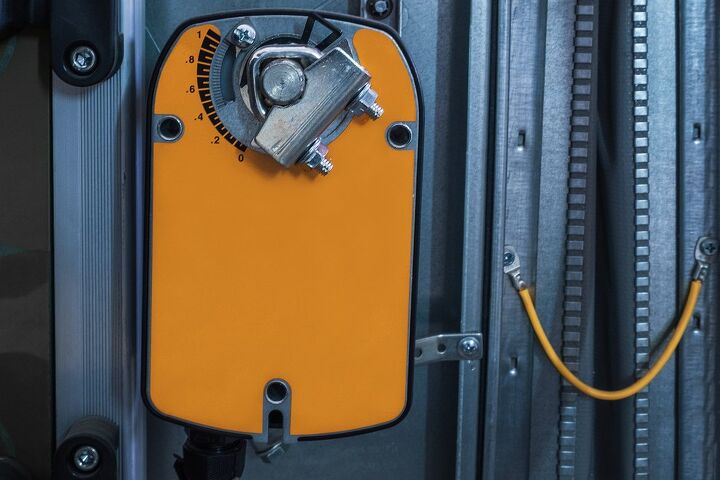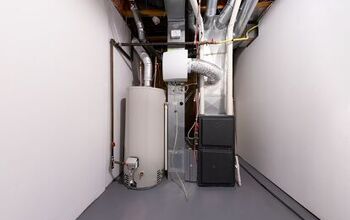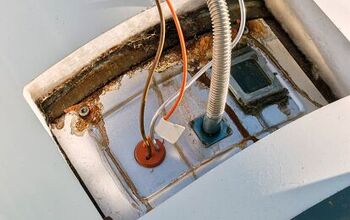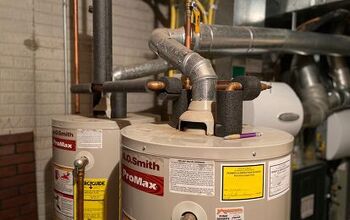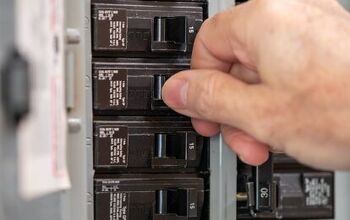What Is A Powered Damper Water Heater? (Find Out Now!)

Your water heater is a complex piece of machinery. There are a multitude of components within that allow your home to have hot water on demand. When one of those components stops working properly, it can create issues with getting that hot water.
For gas water heaters and furnaces as well, there is a feature known as a damper. The damper helps to reduce warm air from escaping. In short, it helps to make that appliance (the water heater in this instance) more efficient than ever before.
Do You Need Water Heater Repair Services?
Get free, zero-commitment quotes from pro contractors near you.

The Heating Element
An electric water heater using a heating element – or a dual heating element depending on the model – to heat up the water in the tank. These tend to be a little more efficient though more expensive than a gas water heater.
Those gas water heaters, meanwhile, use said gas to ignite a flame. The flame ignites and heats the water. But because gas is being used, there is the possibility of gas and hot air escaping. It leads to heavier gas usage, raising your utility bill.
The Chimney Effect
When a gas water heater (or furnace) operates, the room air gets pulled into the appliance to help burn the gas. For a water heater, the warm exhaust gases get vented through what is known as a flue pipe. That flue pipe typically runs up through the roof, but it doesn’t necessarily have to.
When your water heater shuts off, there is still residual heat that warms the air, getting drawn through the vents. It is what is known as “the chimney effect.” The chimney effect results in lost warm air.
How the Damper Works
In an effort to reduce that hot air lost, the damper restricts the flow of that heated air through the venting. Not only that, it is able to reduce the amount of cold air that can leak in from the outside as the warm air escapes.
The damper gets placed between the chimney and heating unit in order to keep heat from escaping after the water heater has shut off. A vent damper is there to improve the overall efficiency of the water heater (and furnace if you have one for that).
The vent damper improves the operating efficiency of the water heater by minimizing the amount of “cold” starts. As the damper works, each “on” cycle will improve in efficiency until it is at its ready state. That time needed to heat the water gets reduced, making the water heater more efficient at heating the water.
Two Types of Vent Damper
Vent dampers, whether used for your water heater or furnace, can also help reduce humidity. In very humid climates, reducing humidity in any way can make the atmosphere in your home more comfortable. It is just a matter of choosing between the two different types.
The two types of vent damper are electromechanical and thermomechanical. Read the difference between the two below.
Electromechanical Damper
This type of damper is paired up with the water heater’s gas valve. This damper type opens when the thermostat sends the signal that the water heater is on. Likewise, it closes when the thermostat sends the requisite signal.
Electromechanical dampers have a built-in fail-safe mechanism meant to prevent the damper from being locked in the closed position. It is possible that if you have a malfunctioning thermostat, the damper is unable to perform its job.
Thermomechanical Damper
On the other hand, there is a thermomechanical damper. What makes it different than the electromechanical damper is that it doesn’t actually have any electrically activated components. Instead, it is comprised of a few bimetallic fingers.
The bimetallic fingers extend into the vent pipe and, when the unit turns on, the hot gases heat the fingers. The fingers are then forced to separate, allowing more gas to escape. When the unit shuts down and the fingers cool, they close to block the flow up gas.
Water Heater Dampers are Less Common
Despite their use in preventing gas and heat from escaping the water heater, they are not quite common these days. Depending on which manufacturer that you find, they will likely have a couple of models that have dampers on them.
These are typically related to Energy Star requirements, which dictate appliances that are energy efficient. The damper gets positioned at the top of the water heater in order to effectively restrict air flow through the vent.
Find out if a tankless water heater and furnace can share a vent.
Can You Install a Damper on Your Existing Water Heater?
For those with older water heaters, there is the possibility of adding to the efficiency of the unit. Keep in mind that even with adjustments, older water heaters are less efficient than most of their modern counterparts.
It is important to note whether or not the damper is compatible with the water heater in question. Not only that, the draft hood on the water heater has to be installed on the damper housing. There are holes provided for both alignment and fastening.
When installing, you need to ensure that the damper is set to the open position to start. If you have questions or concerns about installing the damper, consider having a professional perform the installation.
Can You Tell if the Damper is Open?
If you are unfamiliar with your damper, you may be wondering whether or not the unit is even open. The good news is that there is a relatively simple way to know whether the damper is in the open position or not.
When the damper is open, the wing nut on the housing should be in the same direction as the duct that it is connected to. Should the wing nut be in the vertical position (the opposite position), then your damper is in the closed position.
Energy Efficiency
Really, the only reason to invest in a feature like this is if you are concerned about the energy efficiency of your water heater. Many of us are now concerned with the environmental footprint that we are leaving on this planet. Even more of us just want to save on utility bills.
Going with a damper is not quite as efficient as buying a new, energy-efficient water heater. The damper is a fine way to maximize the efficiency of an older gas water heater if you can’t quite make the investment in a new unit.
Still, the damper will only work for so long. If you want to make a long-term impact on your energy bills, consider upgrading to a modern unit or even going tankless. The latter in particular are extremely efficient, saving you serious money long-term.
Do You Need Water Heater Repair Services?
Get free, zero-commitment quotes from pro contractors near you.

Related Questions
Now that you know more about dampers and the efficiency of your water heater, you may be left with other questions. Here are some of the most relevant related questions from users across the internet.
How Many Hours a Day Does a Water Heater Run?While you may have hot water on demand any time that you want it, your water heater is not actually running all that time. On average, your water heater will run somewhere around three hours each day.
That said, it all depends on the model of water heater that you are using. If you have an older standby water heater, they can run for five hours or more per day. The much more efficient tankless variation, meanwhile, will top out at an hour or two at the most. That is just part of the reason why tankless water heaters are considered to be the most efficient option available for water heaters.
Related Articles

Ryan Womeldorf has more than a decade of experience writing. He loves to blog about construction, plumbing, and other home topics. Ryan also loves hockey and a lifelong Buffalo sports fan.
More by Ryan Womeldorf



